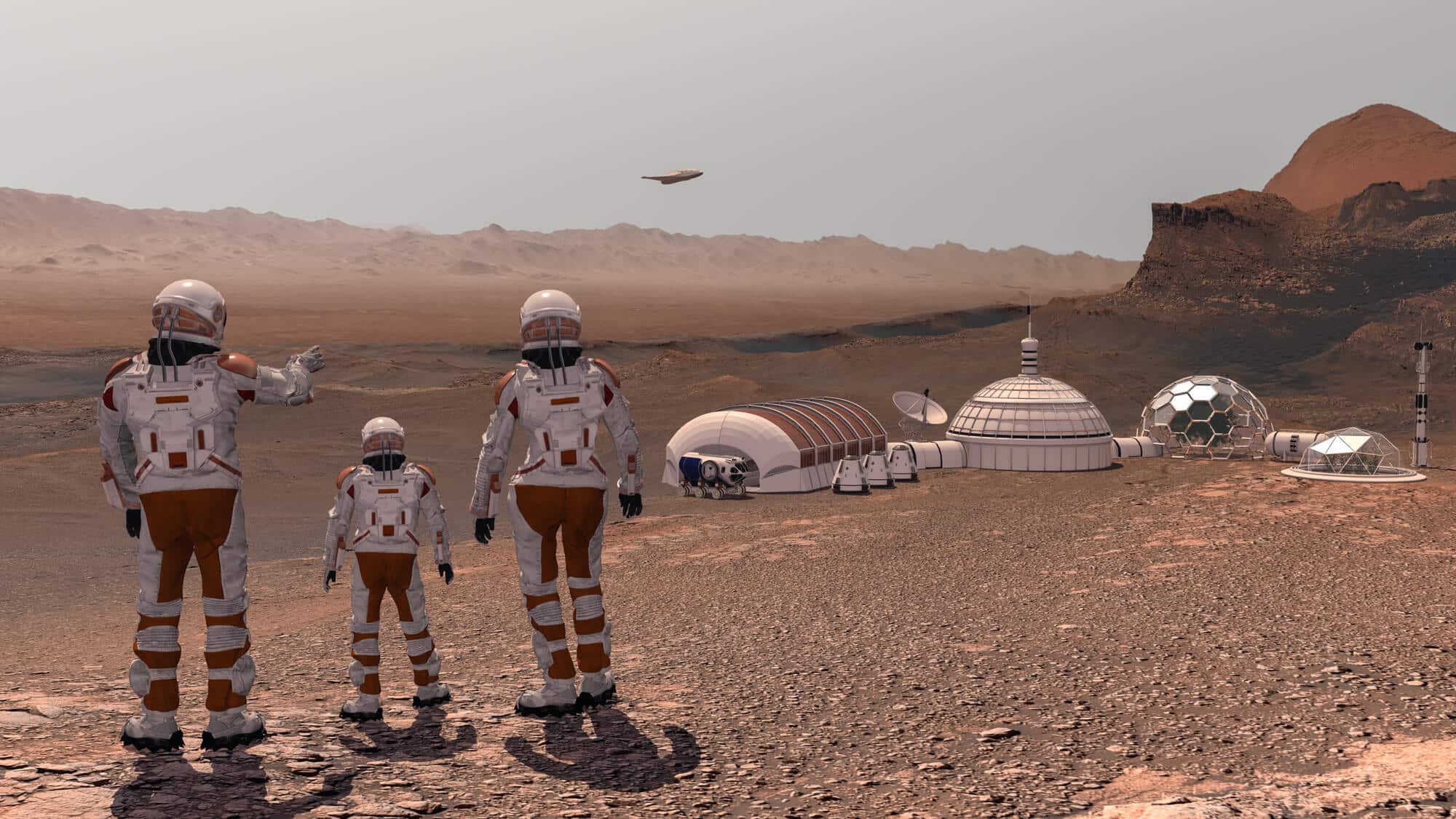The Bio-SPHERE project in the UK is investigating potential living and working conditions on the Moon and Mars
Deep below the surface in North Yorkshire, underground tunnels provide a unique opportunity to explore how humans might be able to live and operate on the moon or Mars.
Researchers at the University of Birmingham launched the Bio-SPHERE project in a unique research environment located 1.1 km below the surface in one of the deepest mining sites in the UK. The purpose of the project is to investigate how it will be possible to carry out scientific and medical activities in the demanding conditions on Mars and the Moon.
The site is the first in a series of new laboratory facilities designed to study how people can work – and stay healthy – on long space missions, a critical requirement to ensure mission continuity on other planets. The team works in partnership with the Bowlby Underground Laboratory, a 4,000 mXNUMX deep underground facility focused on particle physics, Earth science and astrobiological research.
The Bio-SPHERE project is located in a network of tunnels near the Bowlby laboratory that is 3,000 m250 in size and passes through XNUMX million year old rock salt deposits, consisting of Permian evaporite rock layers left over from the Chechstein waters. This geological environment, together with the location deep below the surface of the ground, allowed the researchers to create the conditions of activity that people would experience when working in similar caves on the moon and Mars - remoteness, limited access to new materials and difficulty moving heavy equipment.
In time, thanks to an environment with very little radiation due to this depth, the location will allow scientists to study the effectiveness of underground housing in protecting space crews from deep space radiation, which is a significant risk in space exploration, and also from other hazards such as fragments falling from meteorites, which can cause damage for life-supporting infrastructure.
The first facility to be opened as part of Bio-SPHERE is based on a three-meter-wide imaging module specifically designed to test biomedical procedures necessary to prepare materials to treat tissue damage. These include composite fluids, polymers, and hydrogels for regenerative medicine that could be used, for example, to dress wounds, or a filler to reduce injury.
Bio-SPHERE, which includes a variety of capabilities for working and processing materials under sterile conditions, combines these imaging facilities and the useful geological environment with access to the facilities of the nearby physics and chemistry laboratory.
This environment makes it possible to simulate different mission scenarios and carry out advanced interdisciplinary science, from the effects of extreme environments on biological and physiochemical parameters and medical infrastructure to investigating how the resources available "on site" such as the pressure, temperature and geology of the environment can be used to build a living environment.
Principal investigator Dr. Alexandra Iordaxco said: "We are thrilled to be collaborating with the great scientific team at the Bowlby Underground Laboratory. This new ability will help us collect information that can be useful in life support systems, devices and biomaterials that can be used in emergencies and tissue repair after injuries in deep space missions."
"These types of metrics can guide system designers and help in evaluating the scientific needs and acceptable schedules in bioengineering operations under the constraints of isolated environments, such as living in space. The data will also benefit greatly in national applications, such as performing biomedical interventions in remote areas or dangerous environments, and more generally to understand biomedical flows in these non-ideal environments."
More of the topic in Hayadan:


3 תגובות
In January 2005 I published, here in the knowledge, an article titled:
The first people on Mars will live in caves"
https://www.hayadan.org.il/mars-caves-sevdermish-020105
There are some ideas in there on how I think this should happen. I suggest that NASA review the science and not publish 18 years late good ideas that were already published in the science. Avi Blizovsky, for your attention.
Please respond gently
Sabdarmish Yehuda
A perfect solution for the establishment of Palestine
as an experimental group
If we don't save the planet,
If we continue with the unnecessary and destructive wars that will one day involve nuclear bombs,
If we continue to pollute the earth unaccountably because we do not understand that it is our only home in the universe,
If we continue to destroy forests without accounting
If we continue to drill holes many kilometers into the earth
If we continue like this... then probably future generations (maybe even our grandchildren) will have to move to live even on Earth
in underground tunnels. Is this the future we want for them? What are we fighting for?
I hope that humanity will take care of this important matter, there are enough smart people in the world and it is their time to make an impact.
Eli Isaac is a private teacher of computer science and mathematics up to a master's degree